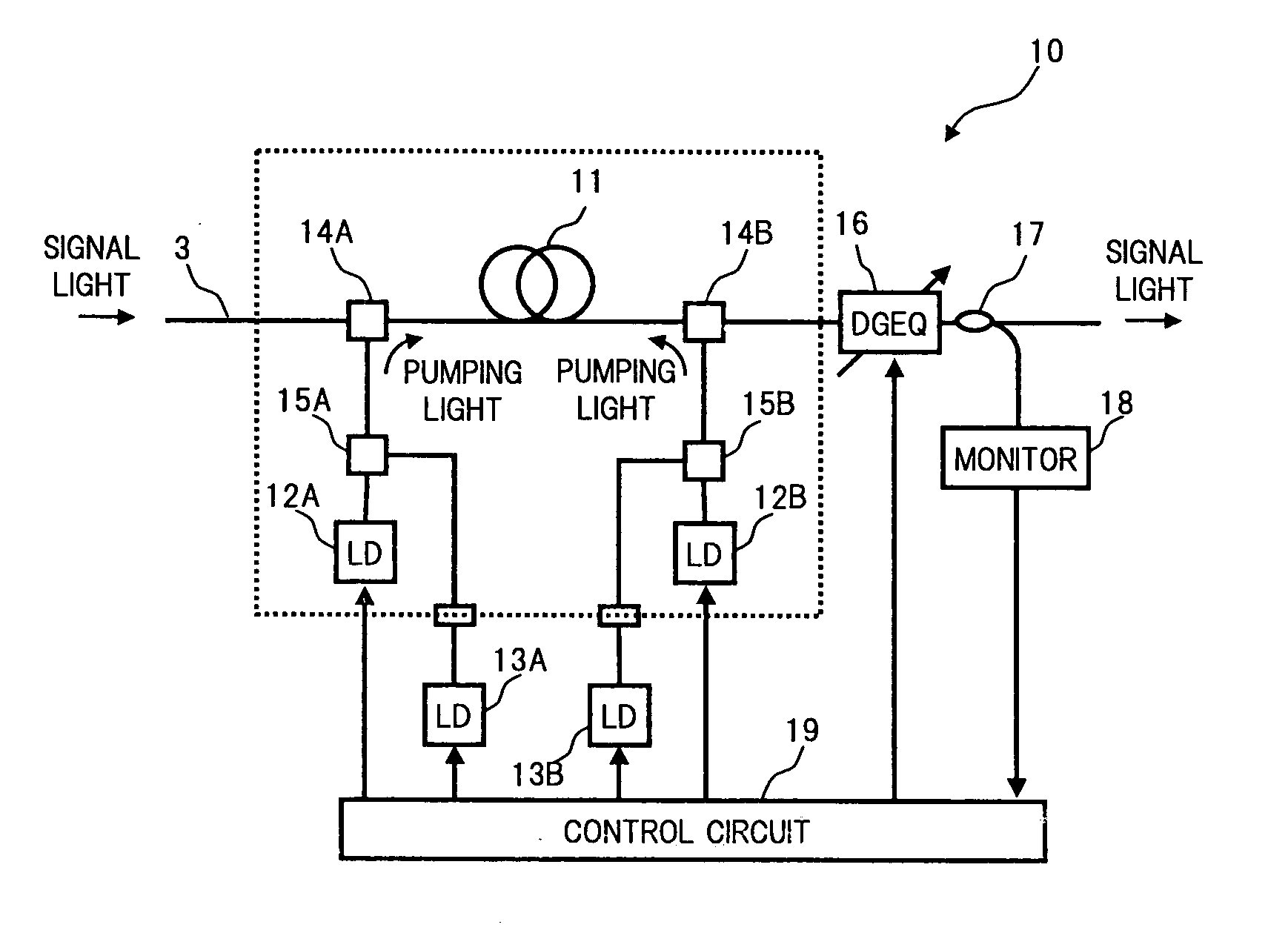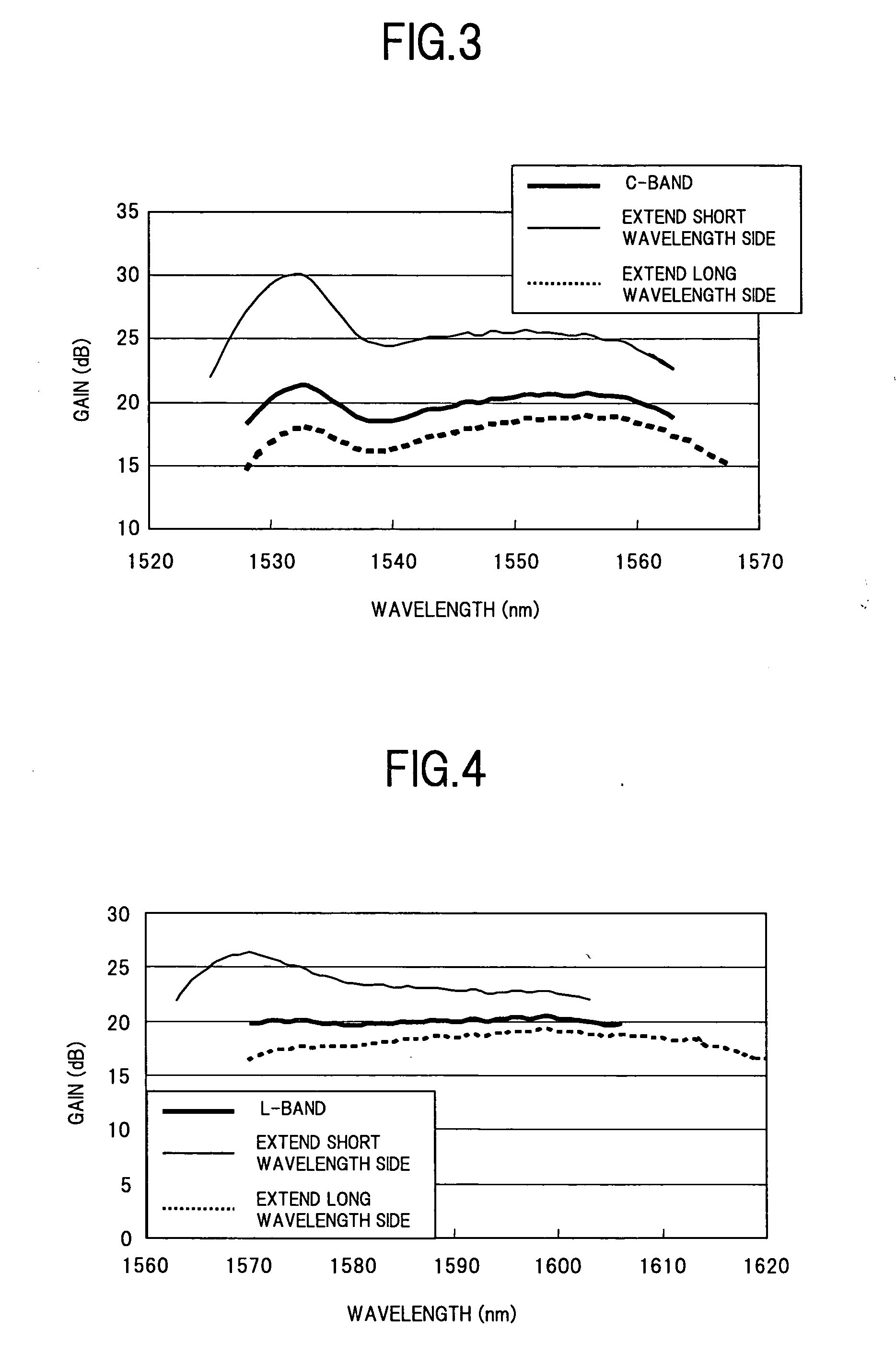Control method of optical fiber amplifier and optical transmission system
- Summary
- Abstract
- Description
- Claims
- Application Information
AI Technical Summary
Benefits of technology
Problems solved by technology
Method used
Image
Examples
Embodiment Construction
[0040] Embodiments for carrying out a control method of an optical fiber amplifier according to the present invention will be described, with reference to the appended drawings. The same reference numerals denote the same or equivalent parts throughout all drawings.
[0041]FIG. 1 is a block diagram showing a configuration of main components of one embodiment of an optical transmission system applied with a control method of an optical fiber amplifier according to a first aspect of the present invention.
[0042] In FIG. 1, the optical transmission system of the present embodiment comprises an optical amplification repeating section 10 including, for example, an amplification fiber 11, pumping light sources 12A and 12B, additional pumping light sources 13A and 13B, multiplexers 14A, 14B, 15A, and 15B, a dynamic gain equalizer (DGEQ) 16, a photocoupler 17, a monitor 18, and a control circuit 19. The overall configuration of the optical transmission system is similar to the conventional c...
PUM
 Login to View More
Login to View More Abstract
Description
Claims
Application Information
 Login to View More
Login to View More - R&D
- Intellectual Property
- Life Sciences
- Materials
- Tech Scout
- Unparalleled Data Quality
- Higher Quality Content
- 60% Fewer Hallucinations
Browse by: Latest US Patents, China's latest patents, Technical Efficacy Thesaurus, Application Domain, Technology Topic, Popular Technical Reports.
© 2025 PatSnap. All rights reserved.Legal|Privacy policy|Modern Slavery Act Transparency Statement|Sitemap|About US| Contact US: help@patsnap.com



